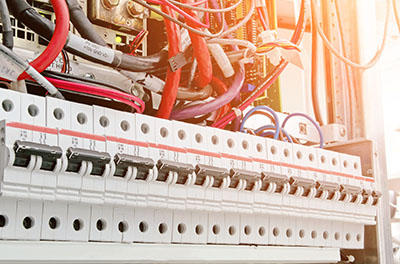
A circuit breaker is an automatic electrical switch designed to stop the flow of electrical current and protect an electrical circuit from damage caused by a sudden excess current, typically resulting from an overload or short circuit. Once a fault is detected, the circuit breaker interrupts the flow of current, preventing damage to the circuit.
Different from a fuse, which must be replaced after one operation, the circuit breaker can be reset to resume normal operation once the source of excess current has been corrected.
Circuit breakers are available in varying sizes, from small devices that protect low-current circuits up to large switchgear designed to protect high voltage circuits. Generator Circuit Breakers (GCBs) protect important equipment in power plants such as generators and transformers by eliminating potential harmful short-circuit faults in fractions of a second, preventing severe damages and possibly lengthy plant downtime.

Types of Industrial Circuit Breakers
There are numerous classifications of industrial circuit breakers usually categorized by their voltage size and arc extinguishing method.
Circuit breakers are grouped by voltage classes that are normally defined as LOW, MEDIUM, and HIGH.
- Low Voltage (0-600V) generally includes Molded Case Breakers, Power Metal Clad Breakers, and Large Molded Frame Power Breakers.
- Medium Voltage (600V through 15KV) includes 4160V, 6.9KV and 13.8KV. Sometimes 34KV breakers are included.
- High Voltage (above 15KV) are usually breakers associated with transmission and first-line step-down coming off transmission.

Arc Extinguishing:
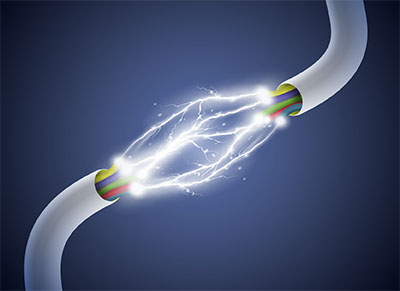
All circuit breakers have contacts and, when the contacts separate during an opening operation, they draw an arc, assuming that power is flowing through the device. The electric arc forms between the contacts and is drawn out in length as the contacts open.
Therefore, circuit breakers require a device to control or remove the arc; the 4 common mediums used to extinguish an arc during breaker contact separation are Oil, Air, Gas, and Opening in a Vacuum.
- Oil Circuit Breakers (OCB): Oil circuit breaker contacts are immersed in oil. Current interruption takes place in the oil, which cools the arc developed and quenches the arc. All three phases of small oil circuit breakers can be placed in one oil tank; however, large high-voltage circuit breakers have each phase in a separate oil tank.
- Air Circuit Breaker (ACB): ACB contacts open in air and use a combination of the characteristic of the arc, air, and a magnetic field to extinguish the arc.
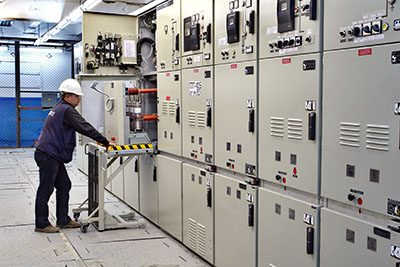
- Air Circuit Breaker (ACB): ACB contacts open in air and use a combination of the characteristic of the arc, air, and a magnetic field to extinguish the arc.
- Air Blast Circuit Breakers: Generally, these breakers are used in high voltage applications. As the name implies, the contacts of an air blast breaker separate in air, whereas the medium voltage ACBs have a mechanical device which displaces air into the arc during the opening operation, the air blast breakers use a stream of compressed air directed toward the separable contacts of the breaker to interrupt the arc formed when the breaker is opened.
- Gas Circuit Breakers: Gas breakers are commonly called SF6 breakers for the Sulphur hexafluoride gas used. The arc generated during opening is extinguished in a chamber filled with pressurized sulfur hexafluoride gas. There are environmental concerns with the SF6 gas if it leaks.
- Vacuum Circuit Breakers: The Vacuum Circuit Breaker interrupts the current in a vacuum. The contacts of a vacuum breaker are enclosed in a ceramic envelope or “bottle” that is evacuated to an extremely low atmospheric pressure—approximately .0023 in. Hg absolute.

Circuit Breakers Voltages
Low Voltage Circuit Breakers are used in domestic, commercial, and industrial applications. Some examples include the Miniature Circuit Breaker (MCB) with a rated current not more than 100A and the Molded Case Circuit Breaker (MCCB) with a rated current up to 2500A.
Magnetic Industrial Circuit Breakers use an electromagnetic solenoid whose contacts are held closed by a latch. When the current in the solenoid increases beyond the rating of the circuit breaker, the solenoid’s pull releases the latch, which allows the contacts to open.
Thermal Magnetic Industrial Circuit Breakers are mostly found in distribution boards. The electromagnet reacts instantly to large surges in current and the bimetallic strip responds to long exposure over-current conditions. The thermal portion of this type of industrial circuit breaker provides either a faster or slower response, depending on the large or smaller currents it is exposed to.
Medium-Voltage Circuit Breakers, rated between 1 and 72 kV, are often assembled into metal-enclosed switchgear line-ups for indoor use or may be individual components installed in outdoor substations. Medium-voltage circuit breakers are also classified by the technique used to extinguish the arc (i.e., vacuum circuit breaker, air circuit breaker, SF6 circuit breaker).
High-Voltage Industrial Circuit Breakers, rated at 72.5 kV or higher are found in electrical power transmission networks, and they are usually solenoid operated with current sensing protective relays operated through current transformers. In substations, the protective relay design is complex, protecting equipment and buses from several types of overload or ground/earth faults.
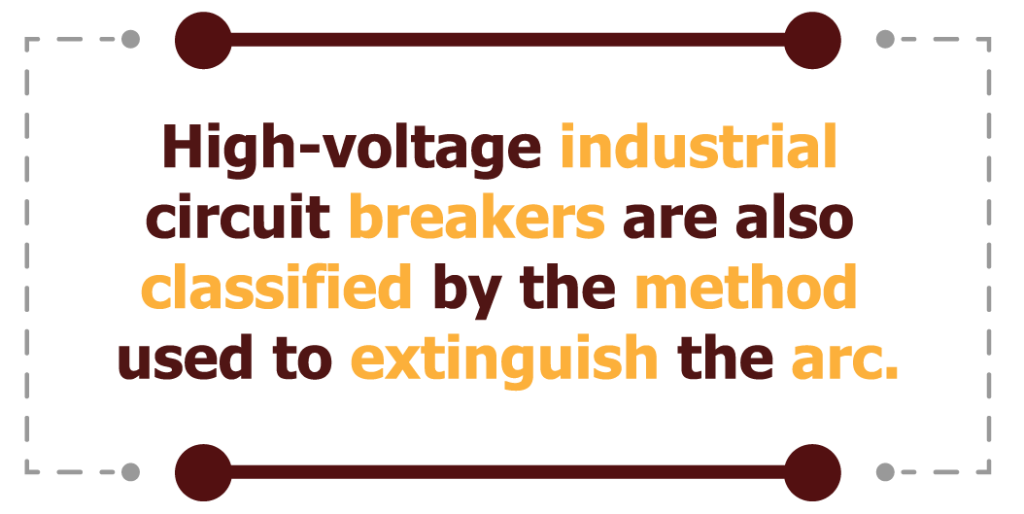
The method for extinguishing the arc (i.e., bulk oil, minimum oil, air blast, vacuum, SF6) also classifies high-voltage industrial circuit breakers. Most new industrial circuit breakers use SF6 gas to quench the arc due to environmental and cost containment concerns over insulating oil spills.
Sulfur Hexafluoride (SF6) High-Voltage Industrial Circuit Breakers use contacts enclosed by sulfur hexafluoride gas to quench the arc. This type of industrial circuit breaker is frequently used for transmission-level voltages and may be incorporated into compact gas-insulated switchgear.

Brands of Circuit Breakers
ABB
ABB is a leader in the field of power and automation technologies, including circuit breakers, that allow homes and utility and industry customers to achieve maximum performance while lowering environmental impact. The worldwide ABB Group of companies operates in 100 countries and employs more than 145,000 people. ABB offers products from miniature circuit breakers to molded-case breakers, all of which are guaranteed to be the safest and most dependable on the market.

ABB is a constant industry innovator with new products and technologies, such as an LTA carbon dioxide (CO2) live tank high-voltage circuit breaker platform introduced at the Paris Cigré technical exhibition in August 2012.
“This is yet another ABB innovation milestone and reaffirms our ongoing commitment to minimizing environmental impact,” said Giandomenico Rivetti, head of ABB’s High Voltage Products business, a part of the company’s Power Products division.

Cutler-Hammer (Eaton)
Cutler-Hammer (Eaton) is a well-known circuit breaker manufacturer. One of the most innovative technologies to come from this company in recent years is the fireguard circuit breaker. Arcing faults can occur when insulation around cords, wires, or cables has deteriorated or been damaged. Eaton’s FIRE-GUARD and Combination Arc Fault Circuit Interrupters (AFCI) mitigate low/high-current arcing faults and offer premium, reliable protection from fire hazards.
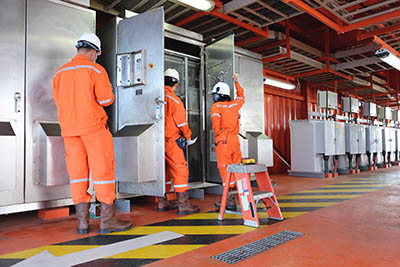
Eaton Corporation is a multinational power management company with sales of $20.9 billion in 2015. It was founded in the United States and has its corporate headquarters in Dublin, Ireland. Eaton has approximately 97,000 employees and sells products to customers in more than 175 countries.
Cutler-Hammer became part of Eaton Corporation in 1978, bringing over $500 million in sales of power control and switching devices. In 1994, Eaton obtained the Distribution and Controls Business from circuit breaker pioneer, Westinghouse. In this acquisition, Westinghouse stipulates that Eaton will not use their name on products they’re acquiring. Eaton now manufactures products that may replace Westinghouse products under the brands of “Eaton” and “Cutler Hammer.”

General Electric
GE, a household name for electrical appliances, offers circuit breakers that are probably some of the best-known and most-used circuit breakers on the market. This circuit breaker manufacturer provides a wide range of products for low, medium, and high voltage applications, from home to industrial electrical requirements.
Like ABB and Seimens, GE is an industry circuit breaker innovator. In April 2016, at Hannover Messe, the world’s leading trade fair for industrial technology, the GE Industrial Solutions business (NYSE: GE) introduced its new GuardEon molded-case circuit breaker (MCCB).
Along with GE’s EntelliGuard air circuit breakers, ArcWatch technology and trip unit toolkit software provide customers the capability to monitor the breaker’s mechanical and electrical health. This is a critical feature in industrial applications where downtime can disrupt an otherwise successful operation.

ITE
ITE was an electrical industry innovator with the creation of the first stored-energy low- and medium-voltage circuit breakers. Known for technical innovation and engineering excellence, ITE was the first company to create 5 kV air magnetic circuit breakers.
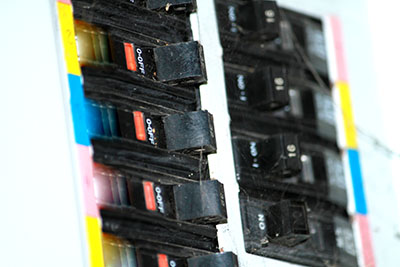
The ITE Circuit Breaker Company sold its products as ITE circuit breakers until Siemens Energy & Automation Inc., a subsidiary of Siemens AG, acquired the ITE business from Gould in 1983. ITE was a prestigious name in the industry, so Siemens continued to use it on circuit breakers up until recently. Siemens now sells all ITE and Siemens circuit breakers under the Siemens brand name.
The Medium Voltage ITE circuit breaker division was not purchased by Gould in1976 and became a separate stand-alone company called ITE Imperial. The company was eventually bought by Brown-Boveri, who merged with ASEA to form ABB. The circuit breakers became the backbone of the ABB MV product line, although most have been completely redesigned.
The ITE name is still widespread in the circuit breaker market, and new Siemens products are available as replacements. However, a quality used ITE circuit breaker may replace an obsolete ITE breaker if there is no current series Siemens breaker available.

SIEMENS
Although Siemens is popular in home appliances and products for various industries, but it is also an innovative circuit breaker manufacturer.
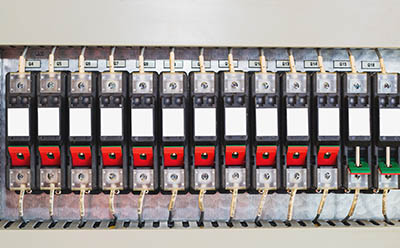
In January 2014, Siemens Low and Medium Voltage divisionintroduced Fusesaver, a high-speed interrupting device for use on fuse-protected tap lines in electrical utilities with overhead distribution systems. The Fusesaver technology can save utilities thousands of dollars per year by preventing fuses from blowing during temporary fault situations
“Improving power quality in a demanding and competitive business environment is one of the most challenging tasks for power utilities today,” says John Karczmarczk, vice president and general manager, Medium Voltage and Systems, Siemens Low and Medium Voltage division. “Reducing the number and duration of power outages and limiting the number of affected customers are important steps toward this goal.”
Again, in December of the same year, Siemens introduced an innovative new circuit breaker that combines AFCI (Arc-Fault Circuit Interrupter) and GFCI (Ground-Fault Circuit Interrupter) safety protection into one device. The new Siemens circuit breaker was recognized as one of Electrical Contractor magazine’s “Showstoppers” at the 2014 National Electrical Contractors Association (NECA) meeting. The award is presented to products that represent the best of new product innovation for the electrical community.

Square D
Square D, an American manufacturer of electrical equipment headquartered in Andover, Massachusetts, has a long history in the circuit breaker business. Their initial name was McBride Manufacturing in 1902. The company’s second name change to Detroit Fuse and Manufacturing was in 1908 . Their last name change was in 1917 to what we now know as Square D. Westinghouse certified Square D to create breakers for them in 1929. In 1991, Square D was obtained by Groupe Schneider S.A., a French electrical devices company located in Paris, and it has become their flagship brand. They offer a wide variety of products for both home and industry.
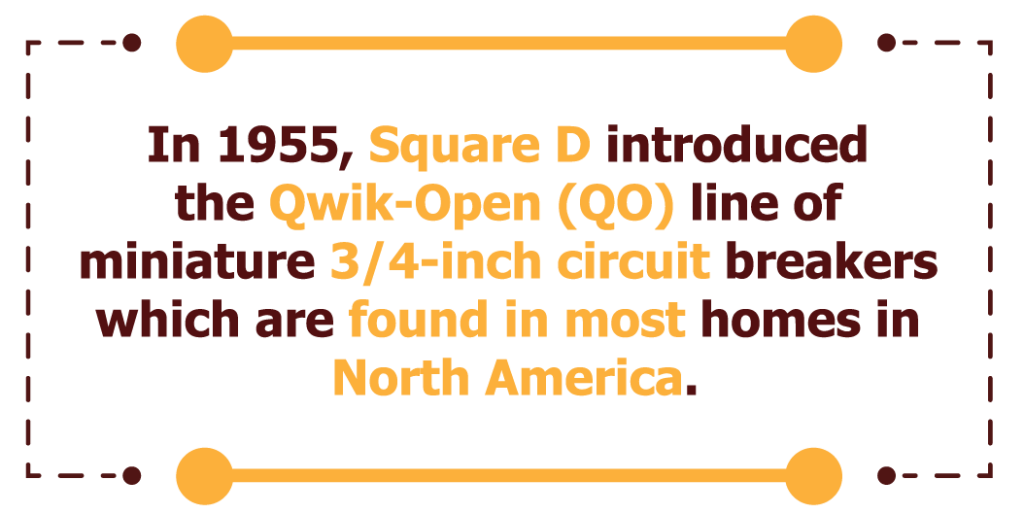
In 1955, Square D introduced the Qwik-Open (QO) line of miniature 3/4-inch circuit breakers. Perhaps their best-known product line, these Square D circuit breakers are used in the electrical distribution boards of many residences in North America. Square D claims these are the fastest-opening breakers in the industry, responding within 1/60th of a second or just one full power cycle on a 60 Hz AC line.
QO breakers include a window with an indication flag, making it easy to identify a tripped breaker in a panel. The Qwik-Open Bolted “QOB” features a screw that secures the breaker in the panel. It is useful in industrial installations where vibration might cause a QO snap-in breaker to loosen.

Zinsco
GTE-Sylvania acquires Zinsco in 1973. They continued to produce breakers and panels with the initial Zinsco design for a few years, but the product line is currently discontinued. Aftermarket and reconditioned Zinsco replacement parts remain available.

Wrap Up
This circuit breaker manufacturer list is by no means complete and only highlights the most common brands in the industry. For your specific application, consult a reputable circuit breaker supplier, one that offers new products as well as professionally reconditioned, tested, and certified products.
